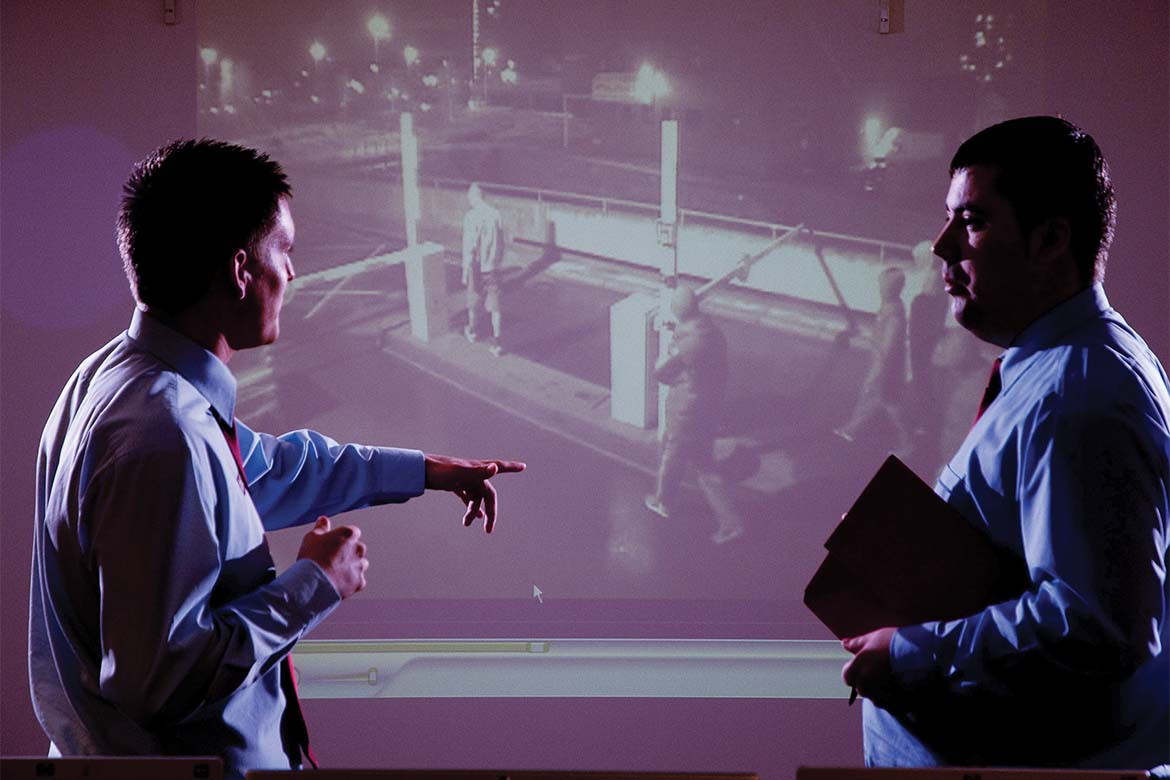Question of Protocol
With a growing number of companies looking to benefit from remote monitoring, Peter Webster of Corps Security outlines the business benefits and examines the role that IP based technology plays in its implementation.
Over the last 20 years or so, developments in Internet protocol (IP) based technology have meant that a wide variety of building services can now be controlled over a single network infrastructure. It is now possible for security, access control, fire detection, voice, data, wireless devices, audio-visual, energy management, lighting controls, and heating, ventilation and air conditioning (HVAC) systems to operate over copper or fibre optic cabling.
Most of us already use the IP communications mechanism on a daily basis via the Internet and our company’s IT network. IP gives every computer or other device on a network an individual address so they can be identified, monitored and managed. They can even be configured and controlled from an off-site location and a growing number of forward thinking businesses are choosing to use third party remote monitoring centres as a way to maximise the efficiency of their operations.
A way to save money and time
When it comes to security, one of the main reasons for using a remote monitoring service is to reduce overheads. The potential cost savings are enormous and let’s, for example, take a look at how it can have a positive impact on barrier and access control.
A large business premises will often have one dedicated person to provide access for deliveries and to allow on-site employee and visitor parking etc. While this is obviously important from a security point of view, there may well be long periods of time where that operative is doing very little. By using an IP based two-way video and voice system, a remote monitoring centre is able to carry out this function as part of a much broader range of activities.
Some companies also fail to consider the need for remote monitoring in the event that an in- house security system becomes compromised. Linking a surveillance system to a remote monitoring centre provides a 24/7/365 service that also ensures that the appropriate response is provided in the event of a fire, break in or other security breach.
A way to improve energy efficiency
Remote monitoring can also help organisations reduce their energy consumption. Although most premises have building energy management systems (BEMS) in place, they can be adjusted over time, leading to a situation whereby they fail to operate at their optimum level. This not only results in wasted energy, it can also have a dramatic effect on a building’s comfort conditions by making certain areas too hot or too cold. A remote monitoring centre can address this by making sure that a BEMS’ set points are correctly configured and properly maintained at all times.
Energy efficiency and security can also be enhanced by remotely turning lights off in unoccupied areas and even switching computers and other networked devices off when they are left on. When you consider that in Europe buildings account for 40 per cent of all energy consumption, it’s immediately evident what an opportunity for carbon reduction having this kind of service can present.
Choosing the right provider for you
When choosing a remote monitoring service provider it is important to select one that has the requisite industry accreditations. Perhaps the most important one is National Security Inspectorate (NSI) Gold – the highest possible designation for security installation professionals. NSI provides the toughest inspection services to ensure that all its approved companies continuously meet the highest standards.
Other key codes of practice to look out for are BS 5979, which defines the parameters that must be adhered to by remote centres receiving signals from fire and security systems. Equally important is BS 8418, which covers the installation and remote monitoring of detector activated surveillance technology and sets out to raise the standard of installation and operation of integrated systems. This not only concerns the overall design of a system, but also the performance of motion detectors, cameras, alarm handling and how the system is maintained. Importantly, the police force will now only issue a unique reference number (URN) to systems that comply with BS 8418.
Some remote monitoring service providers adopt a one-size fits all approach to what they do. This has a variety of downsides as each location has its own particular requirements that can only be fully addressed after carrying out a comprehensive risk and threat assessment. Undertaking an in-depth analysis of activities, premises and facilities will allow the most appropriate solution to be identified.
With the need for more secure and energy efficient buildings, the interest in remote monitoring is only set to increase. While there are clear benefits from using this type of facility, it is important to make sure that the company employed to perform this function has the necessary technical expertise, as only high-end remote monitoring centres that have experience of configuring state-of-the-art IP technology will be able to maximise its potential.
For further information please contact Corps Security on 0800 0286 303 or
Email: info@corpssecurity.co.uk
Peter Webster
Corps Security


